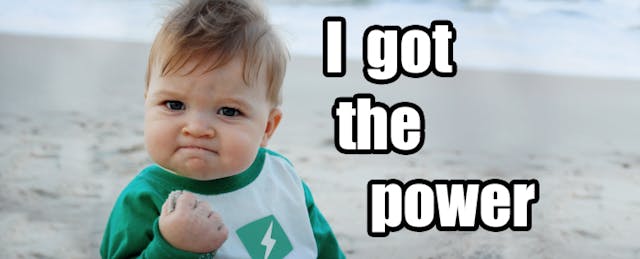Personalized learning and professional development - these buzzwords are humming on everyone’s lips in education these days. Given the national realization that our students need new skills and competencies to be “college and career ready” after they leave our schools, substantial shifts are happening in the areas of teacher practice and educational standards. Personalization seems to be one of the best ways to meet the rising demands of the global economy.
And, while I firmly believe that personalized learning models have the ability to transform the educational experience for kids and adults alike, we’ve reached a critical moment in the conversation.
Right now, school leaders, policy makers, and companies are all jumping into the fray, investing their time and resources in tools such as software-based curricula to adaptive assessment tools. To ensure we invest wisely, we must revisit the core principles of personalized learning, its implications, and it’s intentions.
Recently, I’ve discovered many organizations who provide personalized professional development “solutions” by merely assessing educators and delivering targeted videos, articles, and content. But, if you’re defining personalized learning as targeted content delivery, you’re missing the mark.
According to Barbara Bray, one of the leading voices in the personalized learning movement, the process must “begin with the learner.” This means that the learner is integral to creating the goals, tasks, and methods by which learning actually happens.
The magic ingredient for personalized learning isn’t prescriptive content; it’s empowerment. When people decide what they want to learn, individualized ownership creates the magic. To cite the words of researcher and author Dan Pink, “While complying can be an effective strategy for physical survival, it's a lousy one for personal fulfillment. Living a satisfying life requires more than simply meeting the demands of those in control. Yet in our offices and our classrooms we have way too much compliance and way too little engagement. The former might get you through the day, but only the latter will get you through the night.”
Consider what’s happened with the Edcamp movement. In less than 4 years, hundreds of thousands of educators in dozens of countries have volunteered their Saturdays to explore topics they choose with passionate colleagues. The model isn’t fueled by grants or policies or mandates. Instead, it’s fueled by the excitement and passion that comes from collaborative, learner-selected, learner-driven conversations.
And, Edcamps aren’t the only personalized professional development experiences out there, either. Teachers have taken to Twitter and social media in droves to initiate educational chats during weekends and evenings. Topics such as #sbgchat (standards based grading chat) and #edchat (educational chat) attract hundreds of participants. Teachers are blogging (and reading blogs) more than ever before. Even ASCD, the premier curriculum and leadership organization in the country, titled their recent annual conference “@ Every Learner” to reflect the shift that’s underway.
If we equate these types of organic experiences with a long list of video clips based on a teacher’s profile, then we won’t ever realize the change we want to see in our classrooms. When a teacher passively sits back and watches prescribed content, they’re simply absorbing. When a teacher builds and synthesizes ideas via a personalized experience such as a Twitter chat or Edcamp, they’re actively engaging in the right mix of content sharing and socialization.
To simplify this distinction, consider the following chart:
| Personalized PD does… | Personalized PD does NOT… |
| Generate motivation via empowerment | Generate motivation via requirements or credit mandates |
| Encourage the learner to find their own content | Prescribe specific, static readings or video clips |
| Necessitate time | Increase efficiency |
| Require metacognition from the learner | Have a clear end or finish |
| Require descriptive feedback from lots of sources | Emphasize “right and wrong” answers |
| Embrace low-stakes coaching and on-going development | Emphasize extrinsic rewards or singular evaluations |
Personalized professional development is driven by teacher empowerment. Teachers choose the topics, the formats, and the outcomes. Learning isn’t metered out or required, it’s grown.
As we select the tools that will help us grow the capacity of educators, personalized learning should be considered. But rather than pick tools that prescribe the type of learning that should take place, perhaps we should use our resources to truly answer the following question for every teacher: What do you want to learn?


